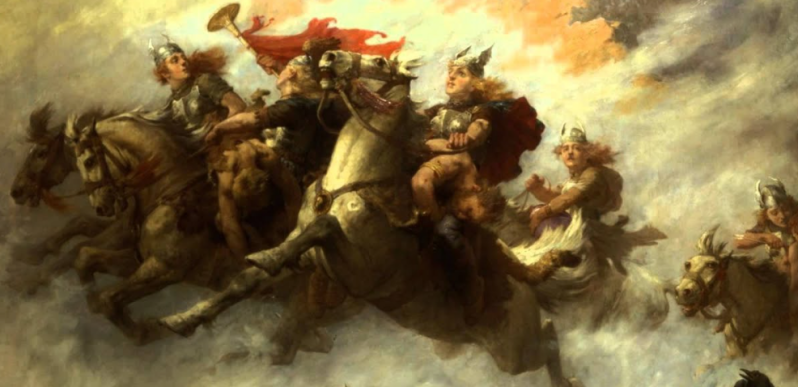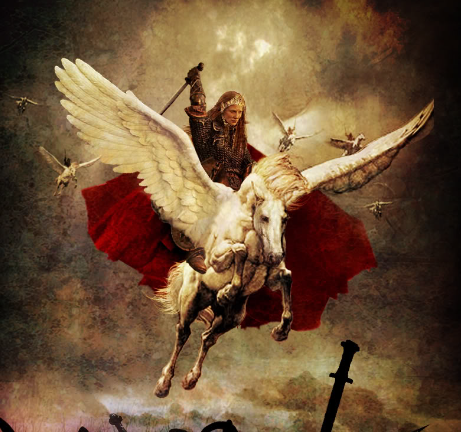Valkyrie
A valkyrie (pronounced “VAL-ker-ee”;
Old Norse valkyrja, plural valkyrjur, “choosers of the fallen”)
is a female helping spirit of the god Odin.
The modern image of the valkyries as elegant, noble maidens bearing dead heroes to Valhalla is largely accurate for what it is, but a highly selective portrayal that exaggerates their pleasant qualities. To some extent, this tendency toward sanitization is present even in the later Old Norse sources, which focus on their love affairs with human men and their assisting Odin in transporting his favorites among those slain in battle to Valhalla, where they will fight by his side during Ragnarok.


As far as we today can tell, the valkyries have always had such characteristics, but in heathen times they were far more sinister. The meaning of their name, “choosers of the slain,” refers not only to their choosing who gains admittance to Valhalla, but also to their choosing who dies in battle and using malicious magic to ensure that their preferences in this regard are brought to fruition. Examples of valkyries deciding who lives and who dies abound in the Eddas and sagas.[1]
The valkyries’ gruesome side is illustrated most vividly in the Darraðarljóð, a poem contained within Njal’s Saga. Here, twelve valkyries are seen prior to the Battle of Clontarf, sitting at a loom and weaving the tragic fate of the warriors (an activity highly reminiscent of the Norns). They use intestines for their thread, severed heads for weights, and swords and arrows for beaters, all the while chanting their intentions with ominous delight.[2] The Saga of the Volsungs compares beholding a valkyrie to “staring into a flame.”[3]
Darraðarljóð is a skaldic poem in Old Norse found in chapter 157 of Njáls saga.
The song, which is seen in a vision by a man named Dorrud, the song consists of 11 stanzas, and within it twelve valkyries weave and choose who is to be slain at the Battle of Clontarf (fought outside Dublin in 1014). Their loom uses human entrails as warp and woof, swords as treadles, an arrow as the batten and men's heads as weights.[1]
Of the twelve valkyries weaving, six of their names are given: Hildr, Hjörþrimul, Sanngriðr, Svipul, Guðr, and Göndul. Stanza 9 of the song reads:
Now awful it is to be without,
as blood-red rack races overhead;
is the welkin gory with warriors' blood
as we valkyries war-songs chanted.[2]
At the end of the poem, the valkyries sing "start we swiftly with steeds unsaddled—hence to battle with brandished swords!"[2] The poem may have influenced the concept of the Three Witches in Shakespeare's Macbeth.[3]
Maak jouw eigen website met JouwWeb